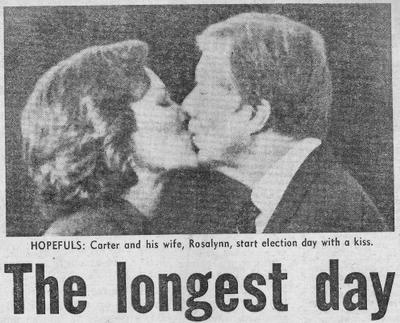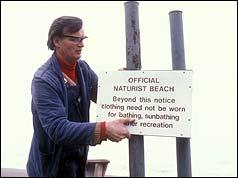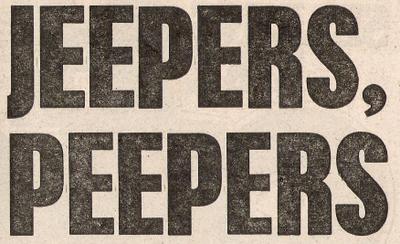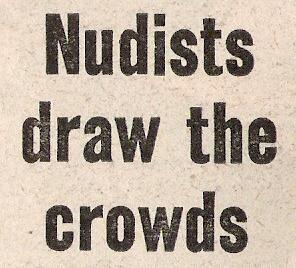 "A Simple Approach To The Magic Cube" by Bridget Last, published in 1980 by a small publishing company, Tarquin Publications of Diss, Norfolk - the first Cube book published in England. The print run was so limited (for what was then a tiny niche puzzle following) that finding a copy today is like finding gold dust. Middle pictures - old Hungarian Magic Cubes occasionally turn up on eBay. There are fascinating differences in the look, weight and feel of the Magic Cube when compared to the Rubik's Cube. Far right - a magazine ad for the Hungarian Magic Cube from March 1981, dating to the time of the worldwide shortage of the new Rubik's Cubes. The book and the Pentangle (a small UK-based company) sold Hungarian Magic Cube are mine. I daren't handle the Cube in case it falls apart! Pentangle, a small company who distributed small numbers of Magic Cubes in the UK, seeing major potential in the puzzle and themselves as continuing distributors, were hoping that the Cube would be mass manufactured (difficult to achieve at that time in Communist Hungary), but the rights were given to Ideal Toys and it was renamed and remanufactured before that happened - and it had any widescale impact on the UK and the rest of the Western World.
"A Simple Approach To The Magic Cube" by Bridget Last, published in 1980 by a small publishing company, Tarquin Publications of Diss, Norfolk - the first Cube book published in England. The print run was so limited (for what was then a tiny niche puzzle following) that finding a copy today is like finding gold dust. Middle pictures - old Hungarian Magic Cubes occasionally turn up on eBay. There are fascinating differences in the look, weight and feel of the Magic Cube when compared to the Rubik's Cube. Far right - a magazine ad for the Hungarian Magic Cube from March 1981, dating to the time of the worldwide shortage of the new Rubik's Cubes. The book and the Pentangle (a small UK-based company) sold Hungarian Magic Cube are mine. I daren't handle the Cube in case it falls apart! Pentangle, a small company who distributed small numbers of Magic Cubes in the UK, seeing major potential in the puzzle and themselves as continuing distributors, were hoping that the Cube would be mass manufactured (difficult to achieve at that time in Communist Hungary), but the rights were given to Ideal Toys and it was renamed and remanufactured before that happened - and it had any widescale impact on the UK and the rest of the Western World.
The first test batches of the Magic Cube were finally released in Budapest, Hungary, then very much "behind the Iron Curtain", just before Christmas 1977. In 1978, the Cube started to become popular in Hungary.
Small numbers of Magic Cubes passed beyond Hungarian borders, individually, via enthusiasts like David Singmaster, and in tiny batches via a small niche puzzle company called Pentangle in England.
Barrett Developments, housebuilders, were giving Magic Cubes away as a 'promotional aid' according to a March 1980 UK newspaper report, and there was interest amongst some academics and some puzzle fans who encountered it in the Western World. But the vast majority of us remained ignorant of the puzzle's existence.
There was no World Wide Web (invented 1989, implemented early 1990s), so no social media.
Another problem was that the Magic Cube existed in no great numbers - not even enough to impact on the mainstream popular culture of a small nation like the UK. It must be noted that the tiny numbers of Magic Cubes distributed by Pentangle in the UK in no way constituted anywhere near enough to bring about any Magic Cube craze in that nation. Check any UK newspaper archive - newspapers eagerly reflect pop culture over the years, and use them to fill their columns. There was no Magic Cube craze. The vast majority of us had never even heard of it.
It's also important to note that speed cubing, one of the major crazes of 1981 in the UK, was very difficult with a Magic Cube - they were not designed for it. However, the 1980 Rubik's Cube was lighter and easier to manipulate.
David Singmaster and Pentangle's early involvement with the Magic Cube is sometimes rather over-stressed - turning them into major purveyors of the Magic Cube in the UK and architects of the later Rubik's Cube craze, and has been since the early 1980s, resulting in confusion and misinformation.
One major BBC TV series, I Love The 1970s, was led by misinformation on these scores to blot its copybook well and truly and confuse Rubik's Cube - the 1980 remanufacturing, renaming and international launch - with the earlier tiny seepage of the Magic Cube. The series went overboard with a host of clips from the early 1980s, including Top of the Pops, Not The Nine O'Clock News and Cube master Patrick Bossert, and claimed something yet to be renamed and remanufactured, with a UK patent date of 7 May 1980, was all the rage in 1979.
The BBC's I Love The 1970s series was supposed to show us the UK pop culture of each year, the TV, the music, the fashion, the fads. But as several of the fads featured in certain years either didn't exist at that time or were old news, the show became a strange, reworked '70s that many viewers had trouble recognising.
A quick look through a UK newspaper archive would have shown the Beeb researchers what was 'hot' in each year. There is no mention of the 'Magic Cube' in the British National Newspaper Archive for 1979, and no Rubik's Cube, of course - because it didn't exist.
The show had to correct the Rubik's Cube information on its website when viewers complained in great numbers. As the BBC's I Love The 1970s had contained several other inaccuracies, as mentioned previously, this did nothing to enhance its reputation among serious pop culture researchers. The series had rather 'sucked in' pop culture from the 1960s and 1980s, and this was not due to confusion, but rather poor research and a desire to 'hype' the 1970s, it was claimed. UK newspaper archives, for example, are full of ads and articles about space hoppers and space hopper races from the spring of 1968 onwards (the release date), it immediately became a craze. But the BBC popped the hopper into I Love 1971 - prompting a load of echoing misinformation around the web.
It was as though the BBC was trying to rewrite, redesign and repackage the 1970s as a hot product. I lost a lot of faith in the BBC via this series. If a major organisation like that couldn't accurately reflect pop culture from a few decades back, then I was unsure it deserved its renowned status.
The Rubik's Cube should, of course, have featured in the BBC's follow-up I Love 1980s series, either in the 1980 episode - when it arrived a few months before Christmas but was in short supply - or, more appropriately, as the series focused on pop culture, in 1981, when the UK became fully stocked and the craze raged. There were no Rubik's Cubes before 1980, and the Magic Cube was never the talk of shops, offices, and school playgrounds. I Love 1981 was a travesty without the Cube.
The Pentangle angle, in particular, keeps coming back to an inaccurate, disproportionate degree, every ten years or so, as successive generations of Cube fans encounter the same misinformation, think they have discovered wondrous new information, then have to discover the truth. We don't know why. Who could it possibly benefit? Pentangle's involvement with the Cube apparently stretched on into the Rubik's Cube era, but ended unhappily for the company in 1981.
One site flags up Pentangle with a slogan about the 'first Magic Cube sold outside Hungary' - attributing that to the company. We can't possibly know that. The Magic Cube fascinated many mathematicians and some, like David Singmaster, as we know, were selling them, in small numbers, to friends and colleagues after visits to Hungary.
We have no proof of who made that first sale.
Come to that, we have no proof of who made the first sale of the 1980 Cube.
David Singmaster and Pentangle are interesting facets of the Cube's history, like squares on a Cube, but there are many of those, and neither caused the Cube to suddenly burst onto the mainstream stage in the UK.
Best to remember that the Rubik's Cube was released in 1980 and the mainstream Cube craze then began in the UK when stocks allowed, as elsewhere in the Western World. There were no Rubik's Cubes before 1980, no large numbers of Magic Cubes, and no major advertising campaigns for the Magic Cube.
All that being said, pre-Rubik's Cube memorabilia is highly collectable. If you have a Magic Cube (easily distinguishable from the first 1980 Rubik's Cubes) you might like to check out its value. Another thing is Bridget Last's book, A Simple Approach To The Magic Cube. This was published by small publishing company Tarquin Publications, of Diss, Norfolk, England, in a limited print run in 1980.
Despite the small seepage beyond its borders, the Cube remained one of Hungary's best kept secrets, mostly tucked away securely behind the Iron Curtain as far as the general public in the UK and the rest of the Western World were concerned.
But things were about to change. In fact, the Cube itself was about to change, both in name and manufacturing process.
A deal was signed with major US Company Ideal Toys in late 1979 for mass distribution of the Cube in the West.
The Magic Cube debuted at the international toy fairs of London, Paris, Nuremberg and New York in January and February 1980 - with Erno Rubik demonstrating his own creation. Reaction was good, but the Cube did not conform to Western manufacturing and packing norms.
This had to be addressed. A new version was produced - lighter, stronger (I still have a 1980 Rubik's Cube in perfect working order - but my older Magic Cube is a brittle, delicate creature) - and easier to manipulate. This opened the way to Rubik's Cube contests - with amazing speeds being achieved.
Just prior to its Western World release, Ideal Toys decided to rename the 1980 version of the Cube. "Inca Gold" and "The Gordian Knot" were two of the names suggested, but "Rubik's Cube" was chosen.
Ideal also designated it 'The Ultimate Puzzle'. With a major company behind it, a new name, advertising and media attention, the Cube was about to enter its legendary era.
 Mathematician David Singmaster wrote:
Mathematician David Singmaster wrote:
... the Magic Cube is now being sold as Rubik's Cube... [the Ideal Toy Corp.] has renamed the cube as 'Rubik's Cube' on the grounds that 'magic' tends to be associated with magic.
The Rubik's Cube trademark was registered in England on 7 May 1980, but due to a shortage, supplies did not start arriving here until just before Christmas. By then, it had appeared on television, Jonathan King had taken one on to Top of the Pops, hailing it as the latest craze in America, and many of us were aware that it was very much one of the 'Next Big Things' in UK popular culture. Many people who were not habitual puzzle fans were entranced by it - it was an attractive and intriguing object with a highly intriguing name, but the shortage stretched on into 1981 and it was spring before the country was fully stocked.
A few cheap imitations appeared to cash in on the shortage.
Hungarian actress Zsa Zsa Gabor presided over the launch of the Rubik's Cube in America in 1980, but, as with the UK, the shortage of Cubes meant the USA also had to wait to experience the full force of the craze until 1981.
The puzzle celebrated 25 years as Rubik's Cube in 2005.
 Detail from the 25th anniversary Rubik's Cube, 2005.
-
Detail from the 25th anniversary Rubik's Cube, 2005.
-
Erno Rubik's wonderful puzzle made it on to the cover of Scientific American in March 1981, with a "computer graphical display" image of the Cube and, inside, an article by Douglas R Hafstadter.
Interestingly enough, although the Scientific American article refers to the puzzle being marketed as "Rubik's Cube" (as it was from 1980 onwards), most of Mr Hofstadter's references are to the "Magic Cube".
 Like most of us, 13-year-old Patrick Bossert had trouble obtaining a Rubik's Cube when they were first released in England in late 1980. There was an acute shortage. He finally secured one in March 1981 and had soon gained a bit of a reputation as a Cube Master at his school. You Can Do The Cube followed - it was published in June 1981 and became the year's bestseller. By the end of the year, it had been reprinted (at least) fourteen times, and Patrick went on to make a cube-solving video.
Like most of us, 13-year-old Patrick Bossert had trouble obtaining a Rubik's Cube when they were first released in England in late 1980. There was an acute shortage. He finally secured one in March 1981 and had soon gained a bit of a reputation as a Cube Master at his school. You Can Do The Cube followed - it was published in June 1981 and became the year's bestseller. By the end of the year, it had been reprinted (at least) fourteen times, and Patrick went on to make a cube-solving video.
 The man himself - Erno Rubik.
-
The man himself - Erno Rubik.
-
 The Sunday Times Magazine "photo-review" of 1981.
The Sunday Times Magazine "photo-review" of 1981.
-
 The Cube certainly made a monkey out of me!
The Cube certainly made a monkey out of me!
 From the Cambridge Evening News, England, 15 July 1981. The Rubik's Cube craze had swept through Cambridge schools earlier in the year, and now it was time for a competition.
From the Cambridge Evening News, England, 15 July 1981. The Rubik's Cube craze had swept through Cambridge schools earlier in the year, and now it was time for a competition.
-
 From the Daily Mirror, 12/8/1981. The article reminds me that "Rubik's Cube" was just as commonly known as "the Rubik Cube" back then. The official name, chosen by Ideal Toys back in 1980, was the former.
From the Daily Mirror, 12/8/1981. The article reminds me that "Rubik's Cube" was just as commonly known as "the Rubik Cube" back then. The official name, chosen by Ideal Toys back in 1980, was the former.
 A how to solve the Rubik's Cube video from 1981...
A how to solve the Rubik's Cube video from 1981...
 ... featuring a leggy, lip-glossed female Cubist...
... featuring a leggy, lip-glossed female Cubist...
 ... an in-depth explanation of what makes a Rubik Cube twist...
... an in-depth explanation of what makes a Rubik Cube twist...
 ... and two little boys - the dark haired one looks rather as though he's wearing hairspray to me.
... and two little boys - the dark haired one looks rather as though he's wearing hairspray to me.
The helpful narrator reminded us that we were watching a video tape (fat chance of that for most of us back in 1981) and so could rewind it if we missed any points, and a cheap disco soundtrack kept the whole thing groovin'.
By the way, I followed the tape's instructions and my Cube still ended up a mess.
 As well as a plethora of "how to solve the Cube" books, there was also this...
As well as a plethora of "how to solve the Cube" books, there was also this...
 Joan Smith's Great Cube Race was a 1982 children's story about a school's Rubik's Cube contest...
"I'm over half way there," said Ollie pleased, going through the moves again between mouthfuls of fish pie. Brr-ik, Brr-ik went the Cube confidently.
Joan Smith's Great Cube Race was a 1982 children's story about a school's Rubik's Cube contest...
"I'm over half way there," said Ollie pleased, going through the moves again between mouthfuls of fish pie. Brr-ik, Brr-ik went the Cube confidently.
"Not while we're eating please," said Dad. "I can't stand the sight or sound of that toy."
"They say it helps with maths," said Mum.
Ollie thought this meant that it was safe to go on and he ran through the pattern once more putting the blue and yellow edge in place. Brr-ik. Brr-ik.
"PUT THAT DOWN," shouted Dad, "or I'll scramble you up so thoroughly that even the winner of the race couldn't put you straight again."
Ollie put the Cube down beside the salt, but Dad could not bear to have it so close to him, and hid it behind the curtain.
 People were doing the Cube absolutely everywhere - as this newspaper article from the "Sun", May 13, 1982, shows!
People were doing the Cube absolutely everywhere - as this newspaper article from the "Sun", May 13, 1982, shows!
If you were not particularly clever, not at all mathematically minded, but managed to solve the Rubik's Cube, and were sitting there, all smug and complacent, 1982 had a surprise in store for you - the release of the even harder Rubik's Revenge! Happy days!
ORIGINALLY PUBLISHED 03 FEBUARY 2010. UPDATED 27 OCTOBER 2024
 An original early 1980s Rubik's Cube. The British Association of Toy Retailers noted the intense interest in the Cube upon its arrival in late 1980 and named it Toy Of The Year as a huge Cube shortage began. There simply were not enough to go round! In the spring of 1981, the nation was finally fully stocked and the Cube won Toy Of The Year for the second year running.
An original early 1980s Rubik's Cube. The British Association of Toy Retailers noted the intense interest in the Cube upon its arrival in late 1980 and named it Toy Of The Year as a huge Cube shortage began. There simply were not enough to go round! In the spring of 1981, the nation was finally fully stocked and the Cube won Toy Of The Year for the second year running. I can't.
I can't.  "A Simple Approach To The Magic Cube" by Bridget Last, published in 1980 by a small publishing company, Tarquin Publications of Diss, Norfolk - the first Cube book published in England. The print run was so limited (for what was then a tiny niche puzzle following) that finding a copy today is like finding gold dust. Middle pictures - old Hungarian Magic Cubes occasionally turn up on eBay. There are fascinating differences in the look, weight and feel of the Magic Cube when compared to the Rubik's Cube. Far right - a magazine ad for the Hungarian Magic Cube from March 1981, dating to the time of the worldwide shortage of the new Rubik's Cubes. The book and the Pentangle (a small UK-based company) sold Hungarian Magic Cube are mine. I daren't handle the Cube in case it falls apart! Pentangle, a small company who distributed small numbers of Magic Cubes in the UK, seeing major potential in the puzzle and themselves as continuing distributors, were hoping that the Cube would be mass manufactured (difficult to achieve at that time in Communist Hungary), but the rights were given to Ideal Toys and it was renamed and remanufactured before that happened - and it had any widescale impact on the UK and the rest of the Western World.
"A Simple Approach To The Magic Cube" by Bridget Last, published in 1980 by a small publishing company, Tarquin Publications of Diss, Norfolk - the first Cube book published in England. The print run was so limited (for what was then a tiny niche puzzle following) that finding a copy today is like finding gold dust. Middle pictures - old Hungarian Magic Cubes occasionally turn up on eBay. There are fascinating differences in the look, weight and feel of the Magic Cube when compared to the Rubik's Cube. Far right - a magazine ad for the Hungarian Magic Cube from March 1981, dating to the time of the worldwide shortage of the new Rubik's Cubes. The book and the Pentangle (a small UK-based company) sold Hungarian Magic Cube are mine. I daren't handle the Cube in case it falls apart! Pentangle, a small company who distributed small numbers of Magic Cubes in the UK, seeing major potential in the puzzle and themselves as continuing distributors, were hoping that the Cube would be mass manufactured (difficult to achieve at that time in Communist Hungary), but the rights were given to Ideal Toys and it was renamed and remanufactured before that happened - and it had any widescale impact on the UK and the rest of the Western World. Mathematician David Singmaster wrote:
Mathematician David Singmaster wrote: Like most of us, 13-year-old Patrick Bossert had trouble obtaining a Rubik's Cube when they were first released in England in late 1980. There was an acute shortage. He finally secured one in March 1981 and had soon gained a bit of a reputation as a Cube Master at his school. You Can Do The Cube followed - it was published in June 1981 and became the year's bestseller. By the end of the year, it had been reprinted (at least) fourteen times, and Patrick went on to make a cube-solving video.
Like most of us, 13-year-old Patrick Bossert had trouble obtaining a Rubik's Cube when they were first released in England in late 1980. There was an acute shortage. He finally secured one in March 1981 and had soon gained a bit of a reputation as a Cube Master at his school. You Can Do The Cube followed - it was published in June 1981 and became the year's bestseller. By the end of the year, it had been reprinted (at least) fourteen times, and Patrick went on to make a cube-solving video.  From the Cambridge Evening News, England, 15 July 1981. The Rubik's Cube craze had swept through Cambridge schools earlier in the year, and now it was time for a competition.
From the Cambridge Evening News, England, 15 July 1981. The Rubik's Cube craze had swept through Cambridge schools earlier in the year, and now it was time for a competition. From the Daily Mirror, 12/8/1981. The article reminds me that "Rubik's Cube" was just as commonly known as "the Rubik Cube" back then. The official name, chosen by Ideal Toys back in 1980, was the former.
From the Daily Mirror, 12/8/1981. The article reminds me that "Rubik's Cube" was just as commonly known as "the Rubik Cube" back then. The official name, chosen by Ideal Toys back in 1980, was the former. ... featuring a leggy, lip-glossed female Cubist...
... featuring a leggy, lip-glossed female Cubist... ... an in-depth explanation of what makes a Rubik Cube twist...
... an in-depth explanation of what makes a Rubik Cube twist... ... and two little boys - the dark haired one looks rather as though he's wearing hairspray to me.
... and two little boys - the dark haired one looks rather as though he's wearing hairspray to me. Joan Smith's Great Cube Race was a 1982 children's story about a school's Rubik's Cube contest...
Joan Smith's Great Cube Race was a 1982 children's story about a school's Rubik's Cube contest...  People were doing the Cube absolutely everywhere - as this newspaper article from the "Sun", May 13, 1982, shows!
People were doing the Cube absolutely everywhere - as this newspaper article from the "Sun", May 13, 1982, shows! 


















































